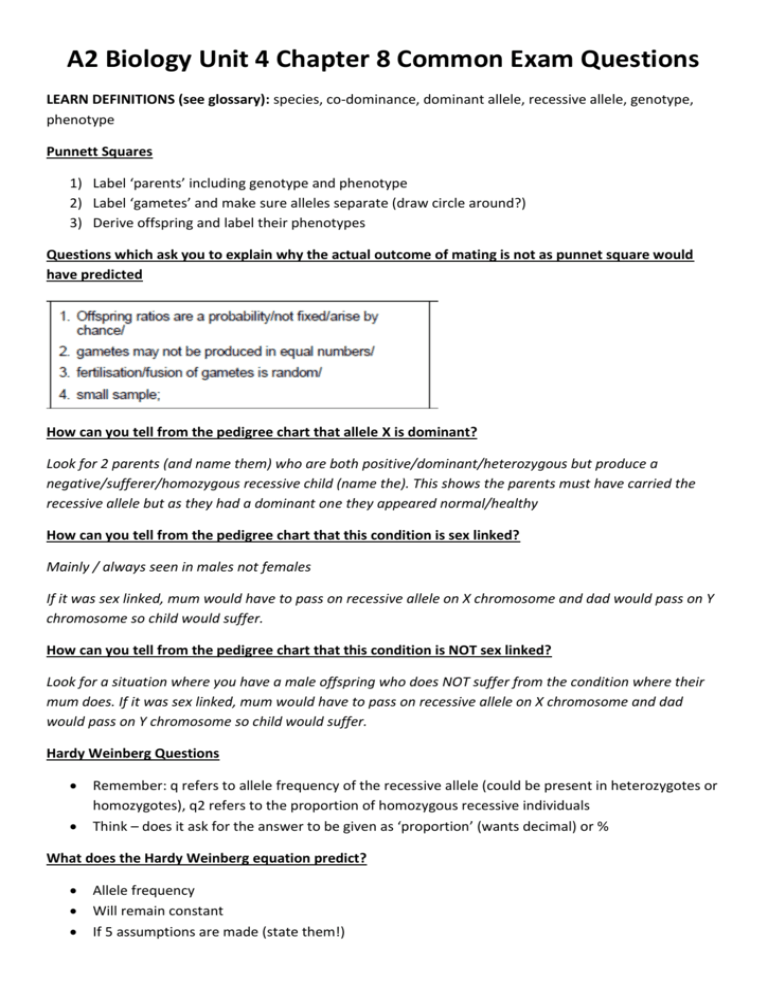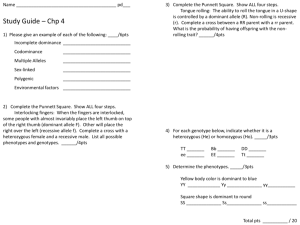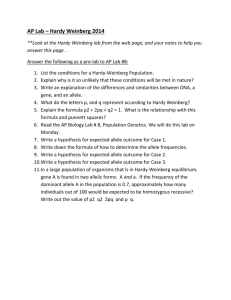
A2 Biology Unit 4 Chapter 8 Common Exam Questions
LEARN DEFINITIONS (see glossary): species, co-dominance, dominant allele, recessive allele, genotype,
phenotype
Punnett Squares
1) Label ‘parents’ including genotype and phenotype
2) Label ‘gametes’ and make sure alleles separate (draw circle around?)
3) Derive offspring and label their phenotypes
Questions which ask you to explain why the actual outcome of mating is not as punnet square would
have predicted
How can you tell from the pedigree chart that allele X is dominant?
Look for 2 parents (and name them) who are both positive/dominant/heterozygous but produce a
negative/sufferer/homozygous recessive child (name the). This shows the parents must have carried the
recessive allele but as they had a dominant one they appeared normal/healthy
How can you tell from the pedigree chart that this condition is sex linked?
Mainly / always seen in males not females
If it was sex linked, mum would have to pass on recessive allele on X chromosome and dad would pass on Y
chromosome so child would suffer.
How can you tell from the pedigree chart that this condition is NOT sex linked?
Look for a situation where you have a male offspring who does NOT suffer from the condition where their
mum does. If it was sex linked, mum would have to pass on recessive allele on X chromosome and dad
would pass on Y chromosome so child would suffer.
Hardy Weinberg Questions
Remember: q refers to allele frequency of the recessive allele (could be present in heterozygotes or
homozygotes), q2 refers to the proportion of homozygous recessive individuals
Think – does it ask for the answer to be given as ‘proportion’ (wants decimal) or %
What does the Hardy Weinberg equation predict?
Allele frequency
Will remain constant
If 5 assumptions are made (state them!)
What assumptions does the Hardy Weinberg equation make?
How does selection occur?
Variation in initial population (state what varied about them)
Variation caused by mutation
Which individuals are at a selective advantage / which allele is advantageous?
XXX allele passed on
XXX allele increases in frequency
Make sure you can spot directional and stabilising selection
How does speciation occur?









